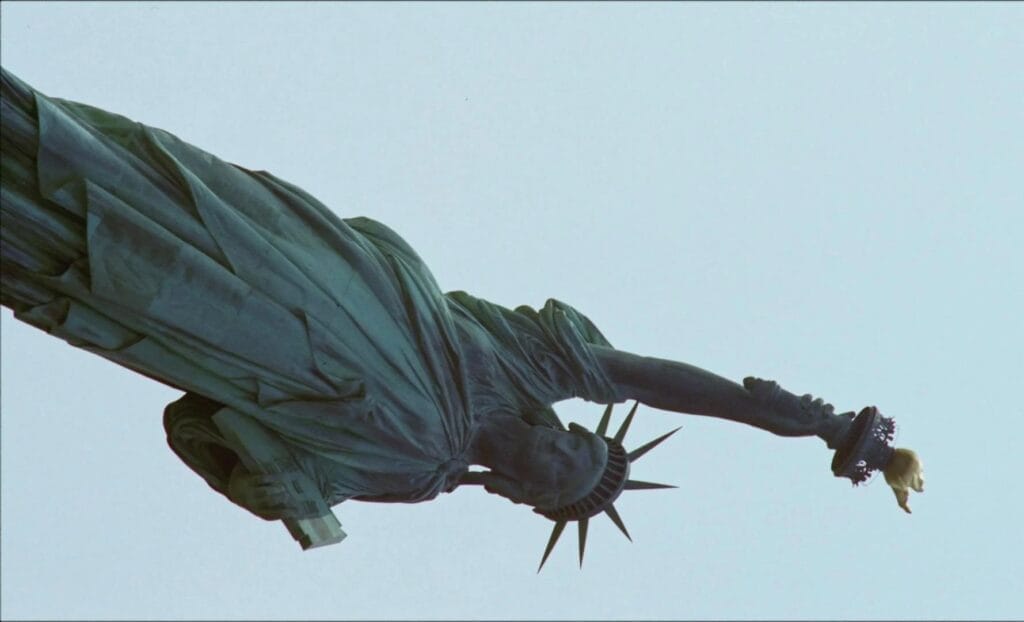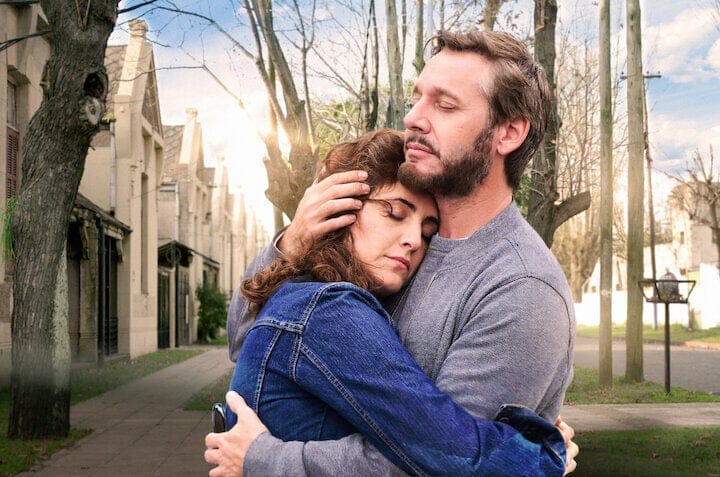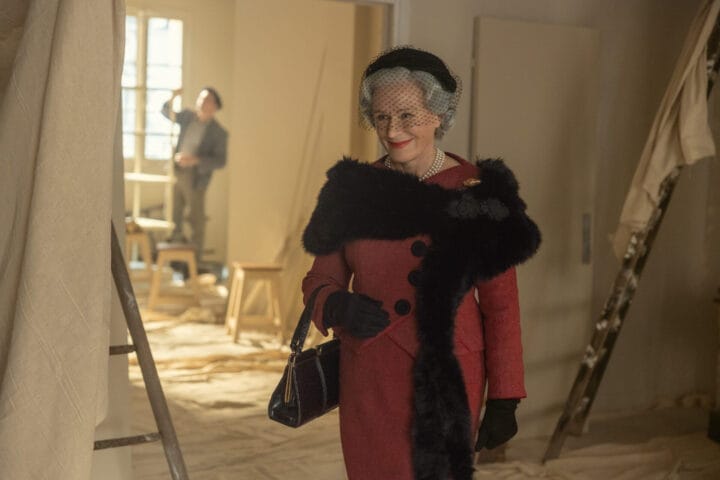“The Brutalist,” Brady Corbet’s monumental cinematic work, distinguishes itself through its aesthetic, narrative, and thematic ambition. An A24 production that has once again triumphed at the Academy Awards, it reaffirms the studio’s position at the forefront of daring and original filmmaking, evident from its opening credits and powerful thematic and aesthetic presence.
Starring a brilliant Adrien Brody, the film chronicles the complex odyssey of László Tóth, a Hungarian-Jewish architect who survives the Holocaust only to confront the promises and perils of the American Dream in the post-war era. Spanning over three and a half hours and unfolding across decades, this epic production captivated critics from its premiere at the Venice Film Festival, where Corbet won the Silver Lion for Best Director. Its triumphant journey culminated in prestigious accolades, including multiple Golden Globes, BAFTA Awards, and three Oscars, including Best Actor for Brody. Its unique visual style, marked by the use of the VistaVision format, and the depth of its themes—the immigrant experience, the relationship between art and patronage, and the weight of trauma—solidify it as an essential work of contemporary cinema.
An Epic Post-War Journey: Synopsis
“The Brutalist” follows László Tóth (Adrien Brody), a visionary architect of Hungarian-Jewish origin, trained at the Bauhaus and a survivor of the Buchenwald concentration camp. In 1947, after World War II, he emigrates to the United States, seeking to rebuild his life and professional legacy, and reunite with his wife, Erzsébet (Felicity Jones), a journalist and Holocaust survivor (Dachau), and his orphaned niece, Zsófia (Raffey Cassidy), who initially remain trapped in Europe.
His arrival in Philadelphia is marked by struggle. He faces assimilation pressures from his cousin Attila (Alessandro Nivola), suffers initial setbacks that lead to destitution and even heroin addiction. However, his destiny changes dramatically when the enigmatic and wealthy industrialist Harrison Lee Van Buren (Guy Pearce) recognizes his extraordinary talent and commissions him for a monumental project: the creation of the Van Buren Institute, an ambitious community center. As the film ominously suggests, “Amassing power and forging a legacy comes at a price.”

The Characters
László Tóth (Adrien Brody): The protagonist is a complex blend of genius, trauma, ambition, and flaws. Brody’s own Hungarian and Jewish heritage adds an extra layer of authenticity to a performance that has been universally acclaimed and awarded.
Erzsébet Tóth (Felicity Jones): László’s wife is not a passive figure. As a journalist and survivor, she possesses keen perception and acts as a moral compass, demonstrating early skepticism towards Van Buren. Her own journey and perspective are central to the narrative.
Harrison Lee Van Buren (Guy Pearce): The millionaire patron is a fascinating and ambiguous figure. His relationship with László is the axis around which much of the drama revolves, oscillating between mentorship, exploitation, and an underlying tension that some have interpreted as having romantic undertones. Pearce’s performance also garnered significant award nominations.
Supporting Cast: Figures such as Harry Lee Van Buren (Joe Alwyn), Harrison’s pretentious son; Zsófia (Raffey Cassidy), the niece rendered mute by trauma; Gordon (Isaach De Bankolé), László’s friend and fellow struggler; Attila (Alessandro Nivola), the assimilated cousin; and Maggie Van Buren (Stacy Martin), among others, complete a rich and complex human tapestry.
Under Brady Corbet’s ambitious direction, “The Brutalist” unfolds as an epic period drama, its narrative spanning several decades, from 1947 to the 1980s. Its considerable length, clocking in at 3 hours and 36 minutes (215-216 minutes), often presented with a 15-minute intermission in theatrical screenings, underscores its monumental scale.
The Construction of a Monument: Production and Visual Style
The journey to bring “The Brutalist” to the screen was as arduous and protracted as the story it tells. The project spanned seven years from its conception and writing to its release. Initial plans involved filming in Poland in 2021, but a series of obstacles, including the COVID-19 pandemic, funding challenges, and personal circumstances of the cast, such as Felicity Jones’s pregnancy, caused multiple delays and changes in the original cast. Corbet’s “relentless” determination, as he describes it, was key to overcoming these adversities.
It is particularly noteworthy that a film of this magnitude—with its epic ambition, period detail, complex themes, and the unusual choice of the VistaVision format—was realized with a remarkably low net budget, estimated at less than $10 million.
Principal photography finally began on March 16, 2023, in Budapest, Hungary. The choice of Hungary was due to a combination of practical factors (tax credits, film laboratories) and Corbet’s prior familiarity with the country. Budapest and its surroundings served to recreate the Philadelphia and rural Pennsylvania of the 1950s. The production also moved to Carrara, Italy, to film in the iconic marble quarries, a decision Corbet defended to financiers for its thematic importance, linked to the idea of possession and the reach of capitalism even over natural materials. Filming concluded on May 5, 2023, giving way to an extensive post-production phase of nearly twenty months. During this period, a minor controversy arose regarding the use of artificial intelligence, later clarified as the use of Respeecher technology to refine the accuracy of certain accents in the dialogue.
One of the most defining and audacious decisions of the production was to shoot a large portion of the film in VistaVision, a high-resolution 35mm format that uses 8 perforations per frame and runs the film horizontally. Cinematographer Lol Crawley and Corbet chose this format, largely unused since the 1960s, for several interconnected reasons. They sought an “archival” quality, a sense of the past that evoked the era portrayed (the 1950s to 1980s). Additionally, VistaVision’s wide field of view allowed them to capture the grandeur of the Brutalist architecture while minimizing the optical distortion common with wide-angle lenses in smaller formats. It was also a tribute to the cinema of the 1950s, including melodramas and Hitchcockian influences, and was intended for an immersive experience in 70mm screenings.
However, the commitment to VistaVision entailed enormous technical and logistical challenges. Very few functional cameras remain in the world; they are extremely heavy and bulky, and require specialized technicians. Post-production was equally complex, demanding 6K scans and generating a massive amount of data (700TB). Corbet even sacrificed shooting days to afford this format. This insistence on an obsolete and difficult-to-handle technology, despite budgetary constraints, demonstrates a profound artistic coherence. It was not a nostalgic whim, but a fundamental choice linked to the film’s themes (period authenticity, architectural scale) and the desired cinematic experience (70mm projection).
It should be noted that other formats were also used, such as standard 35mm, 16mm for certain textures, digital Betacam for the epilogue, and a single shot with an Alexa camera. Visual influences cited include the photography of Saul Leiter and the paintings of Andrew Wyeth and Edward Hopper.
Judy Becker’s production design was crucial in recreating the film’s world, constructing models and sets in Hungary. The costume design by Kate Forbes and the award-winning score by Daniel Blumberg complemented the aesthetic vision, along with the editing by Dávid Jancsó.
The film was a co-production between the United States, the United Kingdom, and Hungary, with the participation of production companies such as Brookstreet Pictures, Kaplan Morrison, Andrew Lauren Productions, and Intake Films. Distribution was handled by A24 in the United States and Universal Pictures / Focus Features internationally.
From the Venice Film Festival to the Oscars: Critical Reception and Awards
The world premiere of “The Brutalist” took place in the official competition of the 81st Venice International Film Festival on September 1, 2024. The film made an immediate impact, receiving a standing ovation (reported to be up to 12 minutes long) and winning the prestigious Silver Lion for Best Director for Brady Corbet. It was also screened at other festivals, such as the SEMINCI in Valladolid.
The awards season confirmed “The Brutalist”‘s status as a heavyweight. Its journey was impressive:
Academy Awards (97th edition): It garnered 10 nominations, tying as the second most nominated film of the year. It won 3 awards: Best Actor (Adrien Brody), Best Cinematography (Lol Crawley), and Best Original Score (Daniel Blumberg). It was also nominated for Best Picture, Best Director, Best Supporting Actor (Guy Pearce), Best Supporting Actress (Felicity Jones), Best Original Screenplay, Best Editing, and Best Production Design.
Golden Globe Awards (82nd edition): It received 7 nominations and won 3 of the main categories: Best Motion Picture – Drama, Best Director, and Best Actor – Drama (Brody).
BAFTA Awards: It accumulated multiple nominations and key victories, including Best Director, Best Actor, Best Cinematography, and Best Original Score.
Other Recognition: It was included in the American Film Institute’s (AFI) Top 10 Films of the Year, received 9 nominations at the Critics’ Choice Awards (winning Best Actor for Brody), and garnered numerous awards from film critic associations.
Our Opinion
This film is a double reflection and a reminder: it cost 10 million dollars and, nevertheless, has an epic dimension and an unparalleled aesthetic ambition. It is full of nuances, grand sets, and has enormous visual power—a result that almost no one achieves, even with budgets exceeding 100 million.
This film is a milestone in that sense, and demonstrates that, with intelligence and creativity, almost anything is possible.
To say that “The Brutalist” is good falls short: it is brilliant in almost everything, especially aesthetically. In addition, it has characters full of history, interesting, dramatic, and, moreover, narratively complex, real, and well-drawn.
The film does not offer easy answers. It explores the complexities of historical trauma, the moral ambiguity of success, the tense relationship between art and power, and the painful search for identity and belonging of the immigrant. Its connection to Brutalist architecture, more metaphorical than literal, adds a layer of meaning that invites reflection on how the spaces we build reflect our individual and collective psychologies.
“The Brutalist” is the kind of movie that some call pretentious, and that, contrary to their opinion, we love at this magazine.
Highly recommended.









